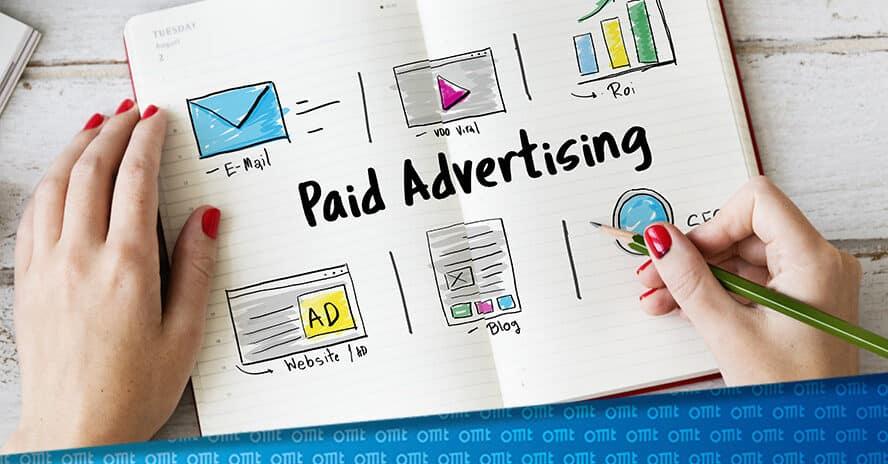In a world where every click counts and attention spans are shorter than ever, marketers are constantly on the lookout for the most effective ways to connect with their audience. If you’ve ever found yourself navigating the complex landscape of digital marketing, you may have come across the terms “organic” and “paid” marketing.But what exactly do these terms mean, and how do they differ? More importantly, when should you use one over the other? In this article, we’ll break down the key differences between organic and paid marketing strategies, exploring the unique advantages of each. Whether you’re a small business owner trying to make your mark, a seasoned marketer looking to refine your approach, or just curious about the best way to reach your audience, understanding these two powerful strategies is essential. So, grab a cup of coffee, and let’s dive in to discover how to make the most of your marketing efforts!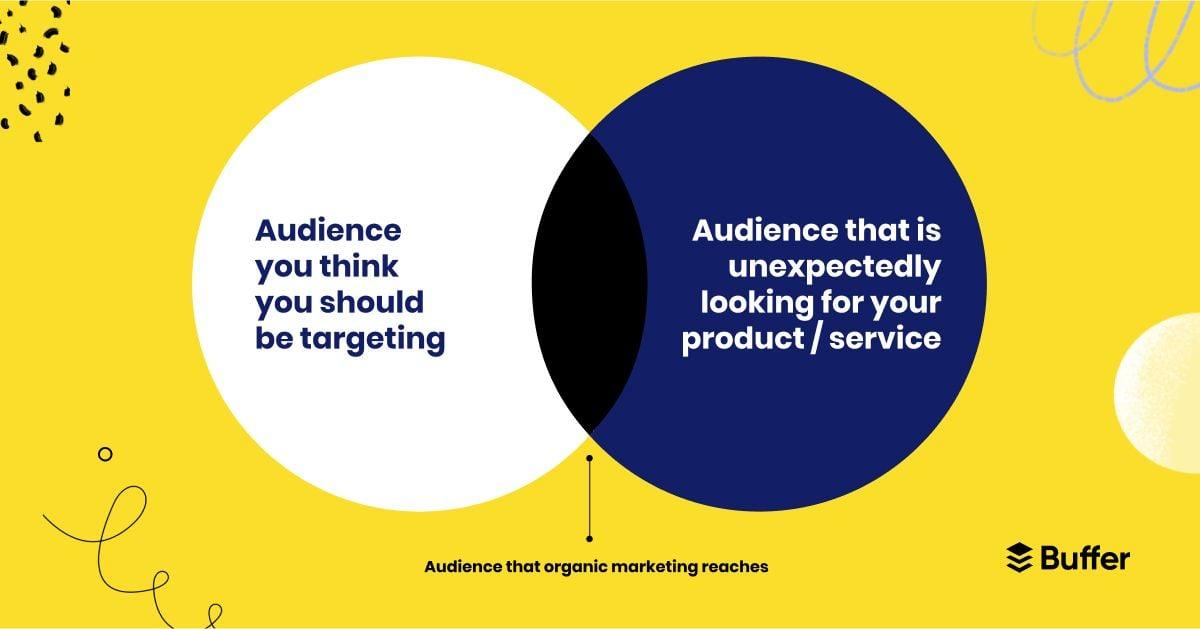
Understanding the Basics of Organic and Paid Marketing
Marketing can be a complex landscape, but at its core, it revolves around two primary strategies: organic and paid marketing. Each method has its own unique benefits and challenges, making it essential to understand when to utilize each for optimal results.
Organic marketing refers to the methods that generate traffic without direct payment. It typically involves efforts like:
- Search Engine Optimization (SEO)
- Content Marketing
- Social Media Engagement
- Email Marketing
This approach is frequently enough seen as a long-term investment. It focuses on building relationships and establishing trust with your audience. Over time, organic marketing can yield sustainable results with a high return on investment (ROI), but it requires consistent effort and patience.
On the other hand, paid marketing encompasses any advertising where you pay for placement. This strategy can include:
- Pay-Per-Click (PPC) campaigns
- Social Media Ads
- Display Advertising
- Sponsored Content
Paid marketing is essentially a way to buy visibility and can produce immediate results. This method is particularly effective for businesses looking to boost brand awareness quickly or promote a time-sensitive offer. However, the downside is that once you stop funding these campaigns, the traffic often dwindles.
To make an informed decision between the two strategies, consider your specific goals. If you’re aiming for long-term growth and building a loyal customer base,organic marketing is the way to go. Alternatively, if you need speedy results or are launching a new product, paid marketing could be your best bet.
| Aspect | Organic Marketing | Paid Marketing |
|---|---|---|
| Cost | Less initial investment | Requires ongoing budget |
| Timeframe for Results | long-term | Immediate |
| Sustainability | high, once established | Low, temporary |
| Traffic Quality | Highly targeted | Varies |
understanding the nuances between organic and paid marketing is crucial in creating a balanced marketing strategy. By leveraging the strengths of each, businesses can enhance their reach, engage their audience, and ultimately drive conversions.
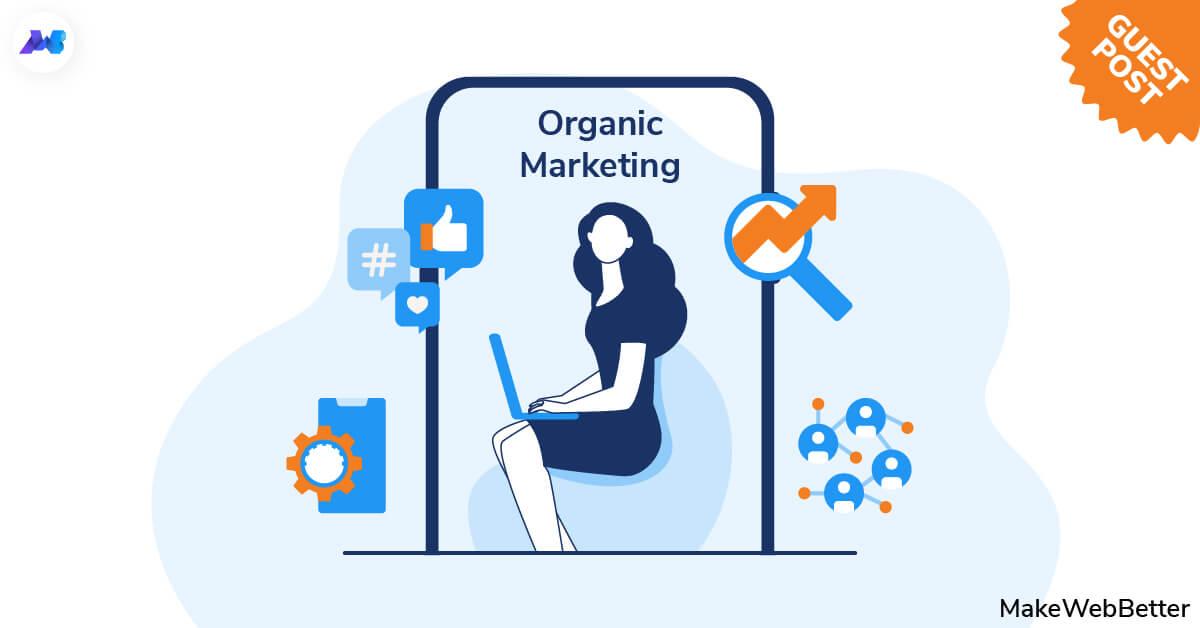
The Benefits of Organic Marketing and why It Matters
Organic marketing offers a multitude of benefits that can substantially enhance your brand’s visibility and credibility.Unlike paid marketing,which typically yields immediate results,organic strategies focus on building lasting relationships with your audience. This fosters genuine engagement and trust, making customers more likely to choose your product or service over competitors.
one of the primary advantages of organic marketing is its cost-effectiveness. By leveraging SEO, content marketing, and social media engagement, businesses can attract traffic without the recurring costs associated with ads. This allows startups and small businesses to compete on a more level playing field with larger companies that can allocate important budgets to advertising.
Another compelling reason to invest in organic marketing is the quality of leads generated. Organic traffic tends to be more targeted, as users often seek out specific data or solutions to their problems. This means that the visitors you attract through organic channels are more likely to convert into loyal customers.
Additionally,organic marketing contributes to the long-term sustainability of your brand. While paid marketing can provide quick wins, its effects often diminish once the budget runs dry. In contrast, the content and relationships developed through organic efforts can continue to drive traffic and engagement well into the future.
Furthermore, organic marketing enhances your brand’s authority and reputation. By consistently producing high-quality content that resonates with your audience,you position yourself as an expert in your field. This not only boosts your credibility but also encourages customers to return to your site for valuable insights and information.
Here’s a quick comparison of organic and paid marketing:
| Aspect | Organic Marketing | Paid Marketing |
|---|---|---|
| Cost | lower long-term costs | Higher ongoing costs |
| Results | Gradual, sustainable growth | Immediate but short-term results |
| Trust | Builds customer relationships | Less trust, often seen as intrusive |
| Longevity | Long-lasting impact | Impact fades quickly post-campaign |
embracing organic marketing not only allows businesses to save on costs but also builds a solid foundation for long-term growth and customer loyalty. In a world where consumers are increasingly savvy and skeptical of traditional advertising methods, prioritizing organic strategies is not just beneficial; it’s essential.
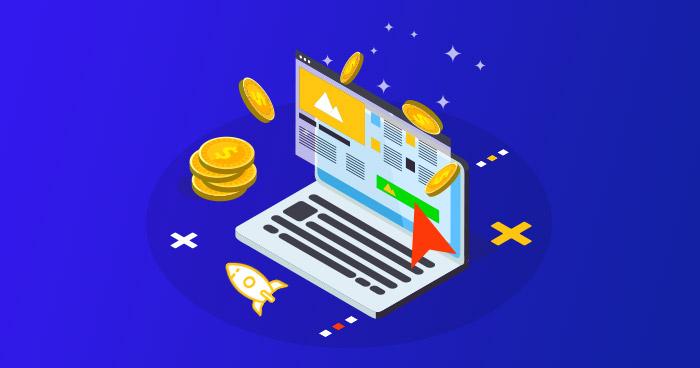
Unlocking the Power of Paid Marketing for Quick Results
When looking to achieve rapid results, paid marketing is often the go-to strategy for businesses aiming to boost their visibility and drive traffic. Unlike organic methods, which can take time to build momentum, paid marketing offers the ability to reach your target audience almost instantly. This is invaluable in today’s fast-paced digital landscape where timing can make all the difference.
One of the primary advantages of paid marketing is targeting precision. With tools like Google Ads and social media platforms, you can pinpoint your audience based on specific demographics, interests, and behaviors. This means your marketing budget is spent efficiently, reaching individuals who are more likely to convert into customers. Some key targeting options include:
- Geographic Location: Target users based on where they are located.
- Interests: Reach individuals based on their likes and online behavior.
- device Type: Tailor your messages to users on mobile or desktop.
Another compelling reason to embrace paid marketing is the immediate visibility it provides.While organic strategies may take weeks or even months to yield results, paid ads can position your business at the top of search engine results pages (SERPs) or prominently on social media feeds from day one. This can significantly enhance brand awareness and lead to higher conversion rates.
Cost control is also a significant benefit of paid marketing. with options like pay-per-click (PPC) advertising, you have the adaptability to set your budget and control your spending. This allows you to experiment with different ads, targeting strategies, and platforms without risking your entire marketing budget. Moreover, you can pause or adjust campaigns in real-time based on performance metrics, ensuring that your resources are allocated effectively.
| Aspect | Paid Marketing | Organic marketing |
|---|---|---|
| Speed | Immediate | Slow |
| Control | High | Medium |
| Cost | Variable | Time and resource-intensive |
| Longevity | Short-term | Long-term |
leveraging paid marketing allows businesses to unlock quick results and gain a competitive edge. However, it’s essential to complement these efforts with organic strategies for long-term sustainability. Balancing both approaches can lead to a robust marketing strategy that drives immediate impact while building lasting relationships with customers.
When to Choose organic Marketing for Long-Term Growth
Opting for organic marketing is a strategic choice that can yield significant benefits for your business over the long haul. Unlike paid marketing, which often generates quick results, organic efforts focus on building a sustainable presence that resonates with your audience. Here are key scenarios when organic marketing becomes the ideal path:
- Building Brand Authority: Consistently sharing valuable content establishes your expertise in your field, making your brand a trusted source of information.
- Fostering Customer Relationships: Organic marketing nurtures genuine connections, allowing you to engage with your audience through storytelling and community-building.
- Cost-Effectiveness: While there may be an initial investment of time and resources, organic strategies can ultimately save money as they do not rely on continuous ad spend.
- Enhancing SEO Performance: Quality organic content boosts your search engine rankings, making it easier for potential customers to find you without paid ads.
When you aim for long-term growth, consider the benefits of patience and consistency. Unlike paid marketing,which can create temporary spikes in traffic,organic marketing efforts compound over time. With each piece of content you create or social media interaction you engage in, you are laying the groundwork for a robust online presence. This cumulative effect leads to increased brand recognition and loyalty.
Moreover, organic marketing can be particularly beneficial during times of uncertainty in economic conditions. Brands that foster loyal communities through organic means often find stability even when ad budgets are tight. By cultivating trust and providing value, you position your brand as a go-to solution, regardless of shifting market dynamics.
lastly, remember that organic marketing is not just about content; it also involves leveraging social proof. User-generated content, reviews, and testimonials can significantly enhance your credibility.Encouraging satisfied customers to share their experiences helps to amplify your organic reach and can draw in new customers through authentic recommendations.
| Benefits of Organic Marketing | Impact on Growth |
|---|---|
| Builds Trust | increases customer loyalty |
| Cost-Effective | Sustained traffic without ongoing ad spend |
| SEO Advantage | Higher search rankings over time |
| Community Engagement | Stronger brand advocacy |
How Paid Marketing Can Complement Your Organic Efforts
While organic marketing strategies are essential for building a sustainable online presence, incorporating paid marketing can significantly amplify your results. Think of paid marketing as the turbo boost that propels your organic efforts, giving them the visibility and speed they need to reach a broader audience. Here are some ways that paid marketing can enhance your organic strategies:
- Immediate Visibility: Organic strategies often take time to yield results, whereas paid marketing can place your content right in front of your target audience instantly. This immediate visibility can drive traffic to your site while your organic efforts are still gaining traction.
- Targeted Reach: Paid advertising platforms allow for precise targeting options. You can reach specific demographics, interests, and behaviors, ensuring that your message resonates with potential customers who are already interested in what you offer.
- Data-Driven Insights: Running paid campaigns provides valuable data and analytics. This information can inform your organic strategies by highlighting what content works best, what messages resonate with your audience, and how to refine your approach for better engagement.
- Boosting Brand Awareness: When you combine paid ads with your organic efforts, you increase your brand’s visibility. Even if users don’t click on your ads, they will see your brand name, which can prompt organic searches later on.
Moreover, paid marketing can definitely help you fill in the gaps during seasonal lows or promotional periods. If you anticipate a dip in organic traffic, supplementing it with a well-timed ad campaign can keep momentum going. Additionally, using paid ads to promote high-performing organic content can maximize its reach and effectiveness, making the most of your existing resources.
It’s also worth noting how paid marketing can support your organic social media efforts.Such as, by promoting a high-quality post or video, you can drive more engagement, shares, and comments, which in turn may boost its organic reach. The synergy between these two approaches creates a cycle of growth that can significantly enhance your overall marketing strategy.
blending paid marketing into your overall strategy allows you to leverage the strengths of both approaches. With immediate results and targeted precision, paid marketing can enhance visibility, stimulate engagement, and provide actionable insights, ultimately driving your organic growth and solidifying your brand’s presence in the digital landscape.
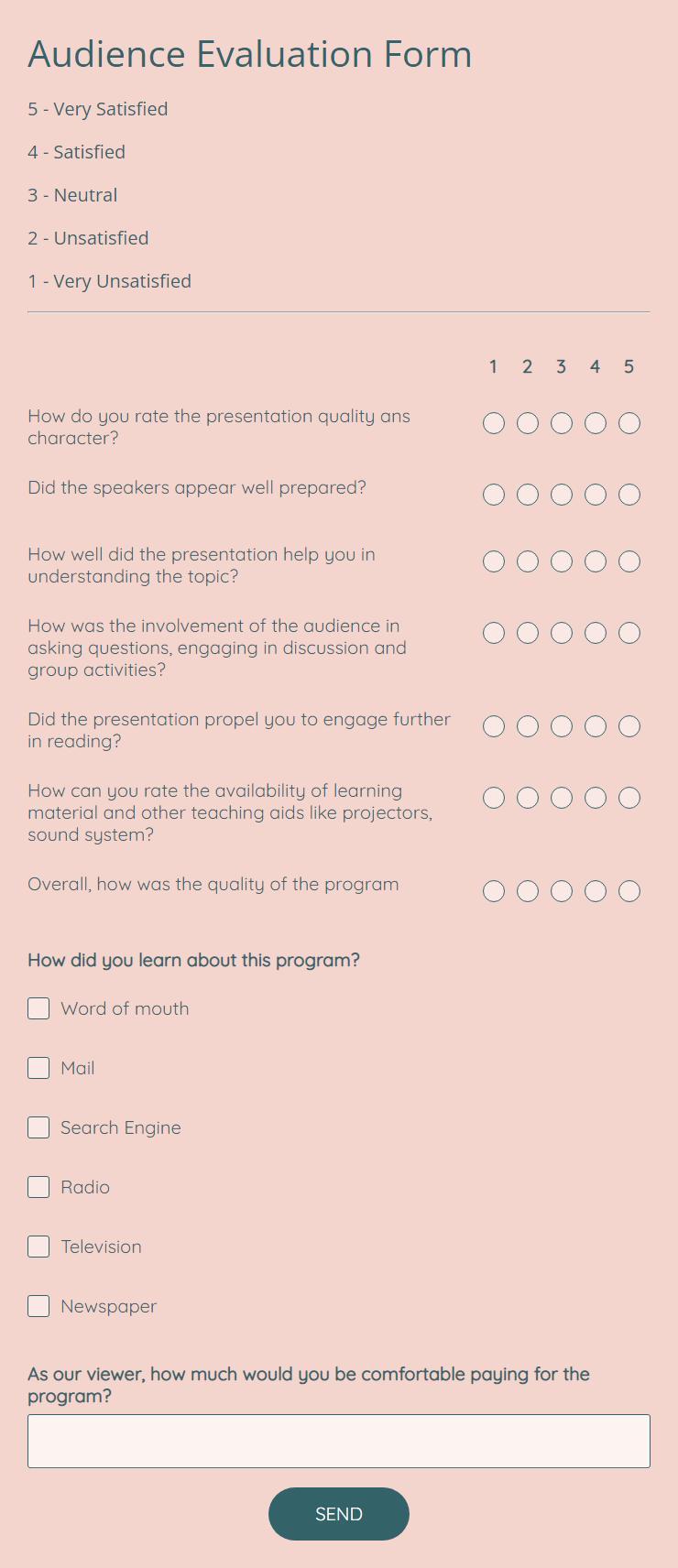
Evaluating Your Audience: which Strategy Aligns Best?
When deciding between organic and paid marketing strategies,it’s crucial to evaluate your audience thoroughly. Understanding who your customers are, their preferences, and their online behaviors can significantly influence your choice of marketing approach. Each strategy has its distinct advantages that can align with different audience characteristics.
Demographics: Start by analyzing the demographics of your target audience. Consider factors such as age, gender, location, and income level. For example:
- If you’re targeting a younger audience, organic marketing through social media platforms like TikTok or Instagram might be more effective.
- Conversely, if your audience consists of professionals, using LinkedIn ads could yield better results.
Consumer Behavior: Understanding how your audience interacts with your brand is key to selecting the right strategy.Look for patterns in how they consume content and make purchasing decisions:
- If your audience prefers in-depth content and takes time to research products, investing in organic content could provide long-term value.
- Conversely, if your audience is more impulsive, paid ads can help capture their attention quickly and drive immediate conversions.
engagement Levels: Analyzing how your audience engages with your content is another vital factor. High engagement levels might indicate that your audience is receptive to organic efforts:
- For communities that actively participate in discussions,share user-generated content,or respond to polls,organic marketing could foster deeper connections.
- However, if your audience is less engaged, utilizing paid marketing strategies can help reach them through tailored messages that cut through the noise.
Budget Considerations: evaluate your budget in relation to your audience’s preferences. Organic marketing frequently enough requires a considerable investment of time, while paid marketing demands financial resources:
| Strategy | Time Investment | Financial Investment |
|---|---|---|
| Organic Marketing | High | Low |
| Paid Marketing | Low | High |
By taking the time to evaluate these aspects of your audience, you can better determine which marketing strategy aligns with their needs and your goals. Remember, the right strategy can leverage your strengths and maximize your return on investment. Whether you lean towards organic methods for building a loyal community or paid strategies for immediate traction, make your choice informed and intentional.
Setting Realistic Budgets: Organic vs Paid Marketing Costs
Organic marketing primarily involves strategies that build long-term visibility without direct payment to media platforms. These can include:
- Search Engine Optimization (SEO): Investing in keyword research, content creation, and on-page optimization can require time and expertise, but it’s a long-term investment.
- Content Marketing: Creating valuable content like blogs and videos demands an upfront time investment but can yield organic traffic over time.
- Social Media Engagement: Building a loyal following through consistent, authentic posts is free; though, it frequently enough involves labor costs.
Conversely,paid marketing strategies offer immediate results but at a cost. Key expenses associated with paid marketing include:
- Pay-Per-Click (PPC) Advertising: Costs can vary widely based on competition,keywords,and platform,but it’s crucial to set a budget that aligns with expected returns.
- social Media Ads: Platforms like Facebook and Instagram allow for targeted advertising, but these can add up quickly.
- Influencer Partnerships: Collaborating with influencers can be effective,but fees can vary greatly based on their reach and engagement.
When setting your marketing budget, it’s essential to analyze both immediate and long-term goals. A table comparing estimated costs for different marketing strategies can provide clarity:
| Marketing Strategy | Estimated Cost | Timeframe for Results |
|---|---|---|
| SEO | Low to Medium (time investment) | 3-6 months |
| Content Marketing | Medium (creation costs) | Ongoing |
| PPC Ads | High (pay-per-click) | Immediate |
| Social Media Ads | Medium to High | Immediate |
| Influencer marketing | Varies (based on influencer) | Varies |
Choosing the right mix of organic and paid strategies will depend on your business objectives, industry, and target audience. While organic methods can build a sustainable presence and drive down costs over time, paid marketing can jumpstart visibility and engagement. A balanced budget that allows for both can set the stage for a triumphant marketing campaign.
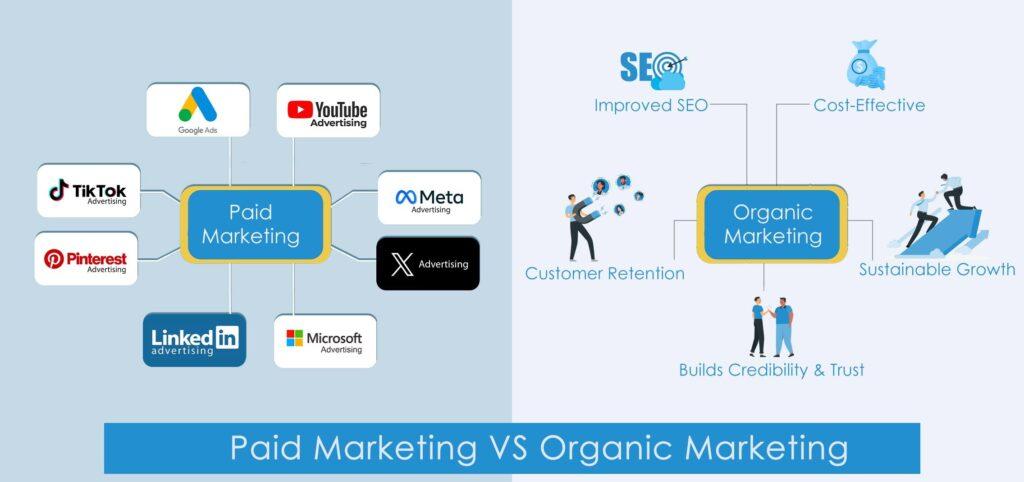
Measuring Success: Key Metrics for Both Strategies
When navigating the landscape of marketing strategies, understanding how to measure success is crucial. Both organic and paid marketing approaches yield different results, and identifying the right metrics can help businesses assess their effectiveness. Here’s a breakdown of key metrics to consider for each strategy.
For Organic Marketing:
- Website Traffic: Monitoring the volume of visitors to your website can provide insights into how well your content is resonating with your audience. Tools like Google Analytics can help track this metric over time.
- Organic Search Rankings: Keeping an eye on where your website ranks for target keywords is essential. Improved rankings frequently enough lead to increased visibility and traffic.
- engagement Rates: Metrics such as time spent on site, page views per session, and bounce rates can indicate how engaging your content is. higher engagement typically translates to better user experience.
- Social Shares: The number of times your content is shared on social media platforms reflects its appeal and reach, acting as a barometer for audience connection.
For Paid Marketing:
- Click-Through Rate (CTR): This metric helps gauge how effective your ad copy and visuals are. A higher CTR indicates that your ads are compelling and relevant to your audience.
- Conversion Rate: Ultimately, the goal of paid marketing is to drive conversions. Tracking the percentage of users who take a desired action after clicking your ads is vital for assessing ROI.
- Cost Per Acquisition (CPA): Understanding how much it costs to acquire a customer through paid ads can definitely help businesses manage their budgets and optimize campaigns effectively.
- Return on Ad Spend (ROAS): This metric measures the revenue generated for every dollar spent on advertising. A strong ROAS suggests that your paid campaigns are performing well and driving profitable results.
Choosing the right strategy—or a blend of both—depends heavily on these metrics. By focusing on the appropriate indicators for organic and paid marketing, businesses can tailor their efforts to achieve the best possible outcomes. Ultimately,success in marketing is about aligning metrics with goals and continuously optimizing based on performance data.
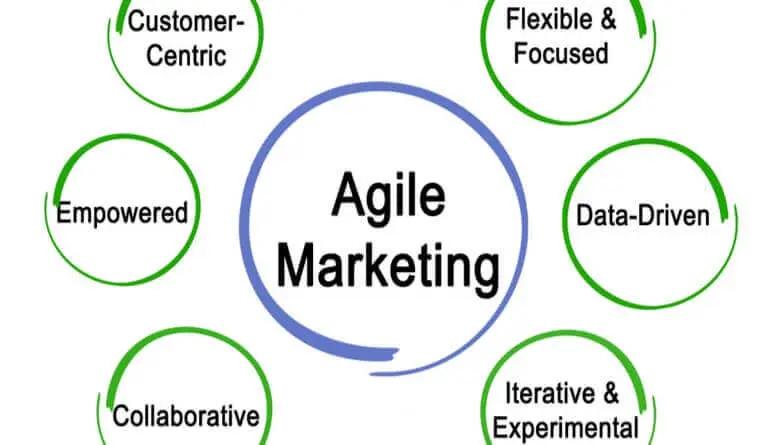
Staying Agile: Adapting Your Strategy Based on Performance
In the ever-evolving landscape of digital marketing, understanding the dynamics between organic and paid strategies is crucial for ensuring that your efforts yield the best results. To truly leverage these two approaches effectively, it’s essential to continuously monitor performance metrics and adjust your tactics accordingly. Here’s how you can stay agile in your marketing strategy.
1. Monitor Key Performance Indicators (KPIs)
Establishing and tracking KPIs is vital. these metrics will help you gauge the effectiveness of your organic and paid campaigns. Consider focusing on:
- Click-Through Rates (CTR): Understanding how many users engage with your ads versus your organic content.
- Conversion Rates: Measuring how well your visitors turn into customers, whether they come from organic searches or paid ads.
- Cost Per Acquisition (CPA): Analyzing the cost-effectiveness of your paid marketing efforts compared to organic growth.
2. Test and Experiment
Don’t hesitate to experiment with different strategies. A/B testing can be a game-changer. By running parallel campaigns—one organic and one paid—you can see which approach resonates more with your audience. This data will inform whether to allocate more resources to paid ads or to strengthen your SEO strategy. Try adjusting elements such as:
- Ad copy and visuals
- Keywords and phrases
- Target demographics
3. Adjust Based on Insights
Once you’ve collected data, use it to refine your approach. If your organic content is driving higher engagement but your paid ads are falling flat, it might be time to shift your budget. Conversely, if paid campaigns are outperforming organic efforts, consider investing more in targeted ads. Here’s a quick example of how this can look:
| Strategy | Performance | Action |
|---|---|---|
| Organic | High Engagement | Increase Content Production |
| Paid | Low CPA | Expand Targeting Options |
4. Continuously Evolve Your Strategy
The digital marketing landscape is constantly changing. Trends shift, algorithms are updated, and audience preferences evolve. Stay ahead by regularly reviewing your strategies and being open to change. This adaptability will not only improve your marketing effectiveness but also bolster your brand’s relevance in a competitive market.
Ultimately, the key to a successful marketing strategy lies in the delicate balance of organic and paid efforts.By staying agile and responsive to performance data, you can ensure that your marketing strategies are always aligned with your business goals and the needs of your audience.
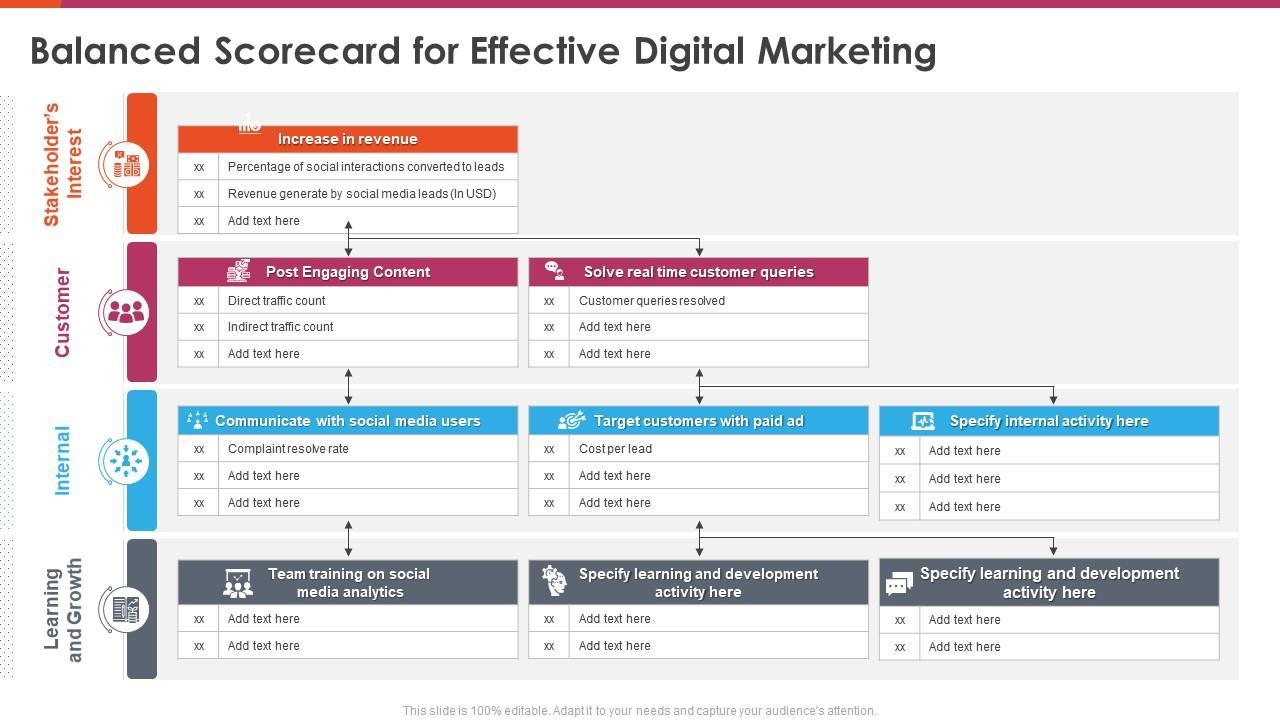
Bridging the Gap: Creating a Balanced Marketing Approach
In today’s digital landscape,businesses are faced with the challenge of effectively reaching their target audience. Balancing organic and paid marketing strategies can be the key to maximizing visibility and engagement. While both approaches have their own merits, understanding when to leverage each can create a harmonious marketing ecosystem.
Organic Marketing focuses on building relationships and trust over time. It’s about creating valuable content that resonates with your audience. Here are some of its main characteristics:
- Cost-effective: Usually involves minimal direct costs, relying on time and effort to create quality content.
- Long-term benefits: Once established, organic strategies can yield ongoing traffic and engagement.
- Authenticity: Builds brand trust as consumers appreciate genuine content over sales pitches.
On the flip side, Paid Marketing offers immediate results and broad reach. It can be a powerful tool for businesses looking to gain traction quickly. Consider the following aspects:
- Immediate visibility: Paid ads can place your brand in front of potential customers instantly.
- Targeted outreach: Allows for precise targeting based on demographics, interests, and behaviors.
- Scalability: Easily adjustable based on budget, allowing you to ramp up campaigns based on performance.
So, when should you use each approach? The answer often lies in your current goals and resources:
| Goal | Recommended Approach |
|---|---|
| Brand Awareness | Organic marketing |
| Immediate Sales | Paid Marketing |
| Building Community | Organic Marketing |
| Product Launch | Paid Marketing |
Combining both strategies can also yield impressive results. For instance, using paid ads to drive traffic to high-quality organic content can enhance your reach and engagement.Similarly,establishing a strong organic presence can support your paid campaigns by creating a robust foundation of credibility and trust.
Ultimately, the ideal marketing strategy hinges on understanding your audience, your budget, and your goals. By cultivating a balanced approach, you can ensure that your marketing efforts are not only effective but also sustainable in the long run.
Real-World Examples: Brands That Succeeded with Both Strategies
In the world of marketing, some brands have masterfully combined both organic and paid strategies to create a robust presence in their respective industries. These success stories illustrate the potential impact of a well-rounded approach,and here are a few standout examples.
1. Nike
Nike has successfully leveraged both organic content and paid advertising to bolster its brand. their “Just Do It” campaign is a perfect example of how powerful messaging can resonate organically. Though, they also invest heavily in targeted ads on social media platforms, ensuring their products reach a specific audience segment, particularly during product launches.
2. Airbnb
Airbnb initially relied on organic growth through word-of-mouth and social sharing but later transitioned to a more aggressive paid marketing strategy. They utilize stunning visuals and customer testimonials in their ads, effectively converting interest into bookings while maintaining a strong community vibe through user-generated content on social media. This blended approach has enabled Airbnb to dominate the travel industry.
3. Glossier
Glossier built its brand on the foundation of organic marketing through social media engagement and influencer partnerships. By fostering a community around beauty and skincare, they generated significant buzz without heavy spending. Nonetheless,as they scaled,Glossier began investing in targeted paid campaigns to reach new demographics and sustain their growth trajectory.
| brand | Organic Strategy | Paid Strategy |
|---|---|---|
| Nike | Powerful messaging and community engagement | Targeted ads during product launches |
| Airbnb | Word-of-mouth and user-generated content | visual ads with testimonials |
| Glossier | Social media engagement and influencers | Targeted campaigns to new demographics |
These brands illustrate that when you blend organic and paid strategies effectively, you can create a formidable marketing plan that not only drives immediate results but also fosters long-term brand loyalty. By adapting their approaches based on the stages of their growth and audience engagement, they have set themselves apart from the competition and established lasting connections with their customers.
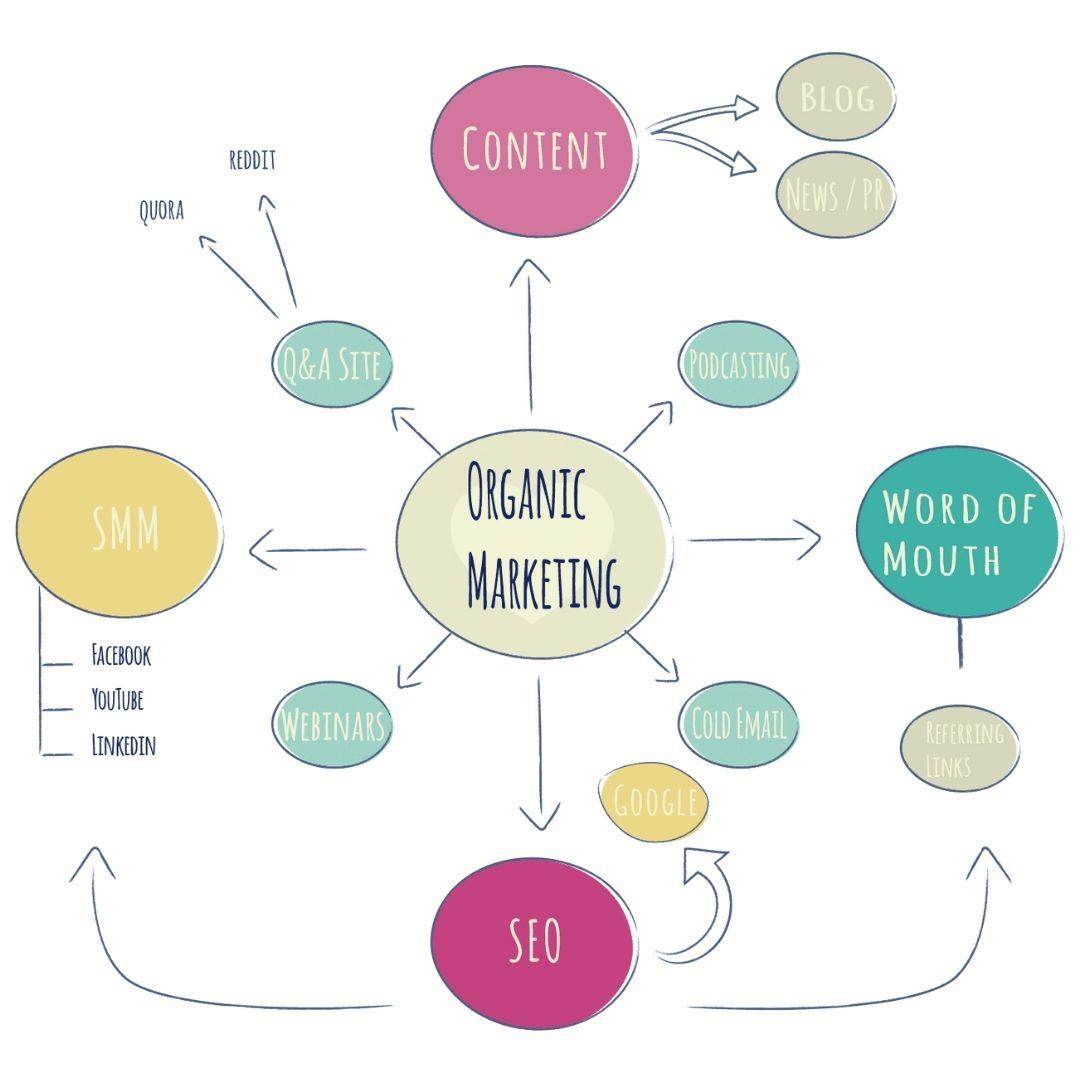
Tips for Seamlessly Integrating Organic and Paid Marketing
To effectively blend organic and paid marketing strategies, it’s essential to approach each component with a clear understanding of their individual strengths. By strategically integrating both methods, you can amplify your reach and enhance your overall marketing effectiveness. Here are several tips to help you achieve a seamless integration:
- Define Your Goals: Start by identifying what you want to achieve with your marketing efforts. Are you looking to increase brand awareness, drive traffic, or boost conversions? Understanding your objectives will help determine how much focus to place on organic versus paid channels.
- Leverage data Insights: Utilize analytics tools to gather data on your audience’s behavior and preferences. This information can guide your decisions on which organic content resonates most, allowing you to create targeted ads that complement your organic efforts.
- Content Repurposing: Transform high-performing organic content into paid ads. For instance, if a blog post garners significant engagement, consider promoting it through social media ads or sponsored content. This not only saves time but also ensures consistency in messaging.
- Retargeting Strategies: Implement retargeting campaigns to re-engage users who interacted with your organic content. By targeting these individuals with tailored ads, you can nurture leads more effectively and encourage conversions.
Additionally, it’s crucial to maintain consistency across your channels. Here are some ways to ensure your branding and messaging align:
- Unified Branding: Ensure that your brand voice, visuals, and messaging are consistent across both organic and paid channels. this consistency builds trust and recognition among your audience.
- Cross-Promotion: Use your organic channels to promote your paid campaigns and vice versa. For example, share your latest promotions in your email newsletters or social media posts to drive traffic to your paid ads.
consider a schedule for evaluating the performance of both strategies.Regular assessments can help you adjust your approach based on what’s working best:
| Metrics | Organic Marketing | Paid Marketing |
|---|---|---|
| Cost Per Acquisition | Low | Higher |
| Time to Impact | Long-term | Immediate |
| Longevity | High | Short-term |
| Flexibility | Moderate | High |
By following these tips and creating a harmonious relationship between organic and paid marketing, you’ll establish a thorough strategy that not only drives traffic but also cultivates a loyal customer base.Embrace the strengths of both worlds and watch your marketing efforts flourish!
Frequently Asked questions (FAQ)
Q&A: The Difference Between Organic vs Paid marketing (And When to Use Each)
Q: what’s the main difference between organic and paid marketing?
A: Great question! At its core, organic marketing is all about building your brand and gaining visibility without spending money on ads. This includes strategies like content marketing, social media engagement, and SEO (search engine optimization). On the other hand, paid marketing involves spending money to promote your brand through ads, such as pay-per-click (PPC) campaigns, sponsored posts, and display ads. Essentially, organic marketing is the slow burn, while paid marketing is like turning up the heat quickly!
Q: Why should I consider organic marketing?
A: Organic marketing is fantastic for building trust and long-term relationships with your audience. It’s about creating valuable content that resonates with your audience, which can lead to loyal customers. Plus, it’s more cost-effective in the long run! While it requires time and effort, the benefits of increased brand awareness and credibility are well worth it.
Q: But what about paid marketing? Isn’t it just easier to throw money at ads?
A: It can be tempting to think that way! Paid marketing definitely offers quick results. If you’re launching a new product or need immediate traffic for an event, paid ads can be your best friend.They allow you to target specific demographics, which can lead to higher conversion rates. However, it’s crucial to have a solid strategy in place; otherwise, you might end up spending a lot without seeing a return on investment.
Q: When should I use organic marketing versus paid marketing?
A: That depends on your goals! If you’re looking to build a long-lasting brand presence, then organic marketing is the way to go. It’s also ideal if you’re on a tight budget and have the time to invest. On the flip side, if you need immediate results or are running a time-sensitive campaign, paid marketing can give you that instant boost. A balanced approach frequently enough works best—using organic methods to build your foundation while leveraging paid ads for specific campaigns or promotions.
Q: how can I effectively combine both strategies?
A: Excellent question! Start by using organic marketing to create valuable content that addresses your audience’s needs and interests. Once you have strong content, you can amplify its reach through paid ads. As an example, promoting high-performing blog posts or social media content can maximize your visibility. Additionally, consider retargeting ads for users who have engaged with your organic content but haven’t converted yet. This combination ensures you’re capitalizing on both immediate visibility and long-term growth.
Q: Any final tips for someone choosing between organic and paid marketing?
A: Absolutely! First, set clear goals for what you want to achieve. Analyze your target audience and figure out where they hang out—both online and offline. Experiment with both organic and paid strategies, and don’t be afraid to adjust your approach based on what you learn. Remember, the best results come from a mix of both strategies, leveraging the strengths of each to create a comprehensive marketing plan that resonates with your audience. Happy marketing!
The way Forward
As we wrap up our deep dive into the differences between organic and paid marketing, it’s clear that both strategies have their unique strengths and play a crucial role in a well-rounded marketing plan.Organic marketing is like nurturing a garden; it takes time and consistent effort, but the long-term rewards can be substantial. Conversely,paid marketing is akin to giving that garden a boost with fertilizer—it can yield quicker results and immediate visibility when you need it most.
Ultimately, the best approach often involves a mix of both. By understanding the strengths and weaknesses of each, you can tailor your marketing strategy to fit your business goals, budget, and timeline. So, whether you’re just starting out or looking to refine what you already have, consider how you can leverage both organic and paid methods to create a powerhouse marketing strategy.
Remember, it’s not about choosing one over the other, but rather knowing when to use each to maximize your success. So get out there, experiment, and find the balance that works for you! Happy marketing!

